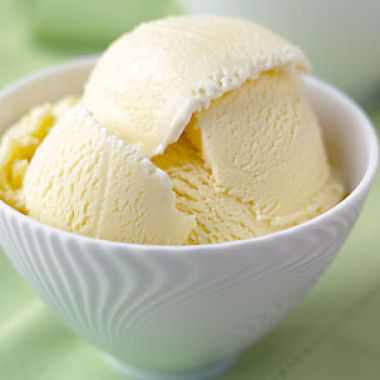Tips for Making Ice Cream

Most ice cream recipes call for making a custard-a smooth, silky fusion of eggs, cream, milk and sugar in varying proportions. The custard is cooked on the stovetop just until the ingredients come together as a thickened, satiny sauce. These tips will help ensure perfect results.
- Use a heavy saucepan to prevent scorching, and cook the custard over medium to medium-low heat.
- Stir the custard with a wooden spoon or spatula, which is more efficient than a metal spoon for scraping the bottom of the pan during cooking.
- Be patient. Custard takes some time to thicken. If you rush and allow the custard to boil, the proteins in the eggs and the milk or cream will not thicken correctly, and the custard could curdle or separate.
- To test if the custard is properly thickened, wait until it coats the back of the wooden spoon. Then draw your finger along the length of the back; it should leave a clear trail. The custard will also look glossy and feel thicker as you stir.
- Strain the custard through a fine-mesh sieve to remove lumps. This will guarantee a smooth base for a creamy finished ice cream.
- To cool the custard quickly, place the bowl holding the custard in a larger bowl partially filled with cold water and ice cubes (known as an ice-water bath). Stir the custard occasionally until it reaches room temperature.
- Refrigerate the custard until it is very cold, at least 3 hours. Using a very cold custard will prevent ice crystals from forming when the mixture is churned, and the colder the custard is when added to the ice cream maker, the more efficient the freezing process will be. The custard will keep in the refrigerator for up to 24 hours, and its flavor improves as it mellows.
Adapted from Williams-Sonoma Collection Series, Ice Cream, by Mary Goodbody (Simon & Schuster, 2003).